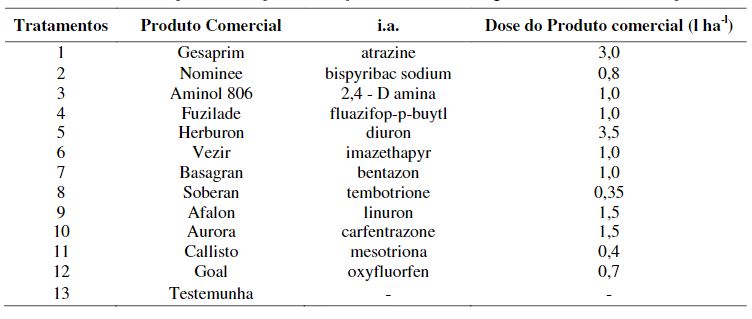Selectivity of herbicides on the growth of initial culture of açai (Euterpe oleracea Mart.)
DOI:
https://doi.org/10.20873/jbb.uft.cemaf.v5n1.brandaoKeywords:
Phytotoxicity, atrazine, fluazifop-p-butil, linuron, bispyribac sodiumAbstract
Due to the expansion of cultivation in different traditional areas of acai, technical information are necessary for its economic output. Between these areas are the floodplains systematized in the state of Tocantins. The initial slow growth characteristic of this species is competition from weeds a major concern in the production system. This research aimed to evaluate the toxicity of herbicides applied post-emergence at different stages of the main crop. The experiment consisted of a randomized block design with four replications installed on 13 X 3 factorial design with four replications. At 7, 16, 25 and 34 days after application (DAA), we determined the percentage of intoxication in relation compared with the control. At the end of 60 DAA plants were harvested and measured their height, stem diameter and placed to dry for determination of the vegetative components of dry mass. Herbicides that promoted greater reduction in the assessed variables were carfentrazone, bentazon, diuron, 2,4 - D, imazetaphir and oxyfluorfem. The most promising herbicides for use in the culture of Açai were atrazine, fluazipfop, linuron, mesotrione and bispyribac sodium.

Published
How to Cite
Issue
Section
License
Copyright (c) 2024 - Journal of Biotechnology and Biodiversity

This work is licensed under a Creative Commons Attribution 4.0 International License.
Authors who publish with this journal agree to the following terms:
Authors retain copyright and grant the journal right of first publication with the work simultaneously licensed under a Creative Commons Attribution License (CC BY 4.0 at http://creativecommons.org/licenses/by/4.0/) that allows others to share the work with an acknowledgement of the work's authorship and initial publication in this journal.
Authors are able to enter into separate, additional contractual arrangements for the non-exclusive distribution of the journal's published version of the work (e.g., post it to an institutional repository or publish it in a book), with an acknowledgement of its initial publication in this journal.
Authors are permitted and encouraged to post their work online (e.g. in institutional repositories or on their website) prior to and during the submission process, as it can lead to productive exchanges, as well as earlier and greater citation of published work (Available at The Effect of Open Access, at http://opcit.eprints.org/oacitation-biblio.html).


